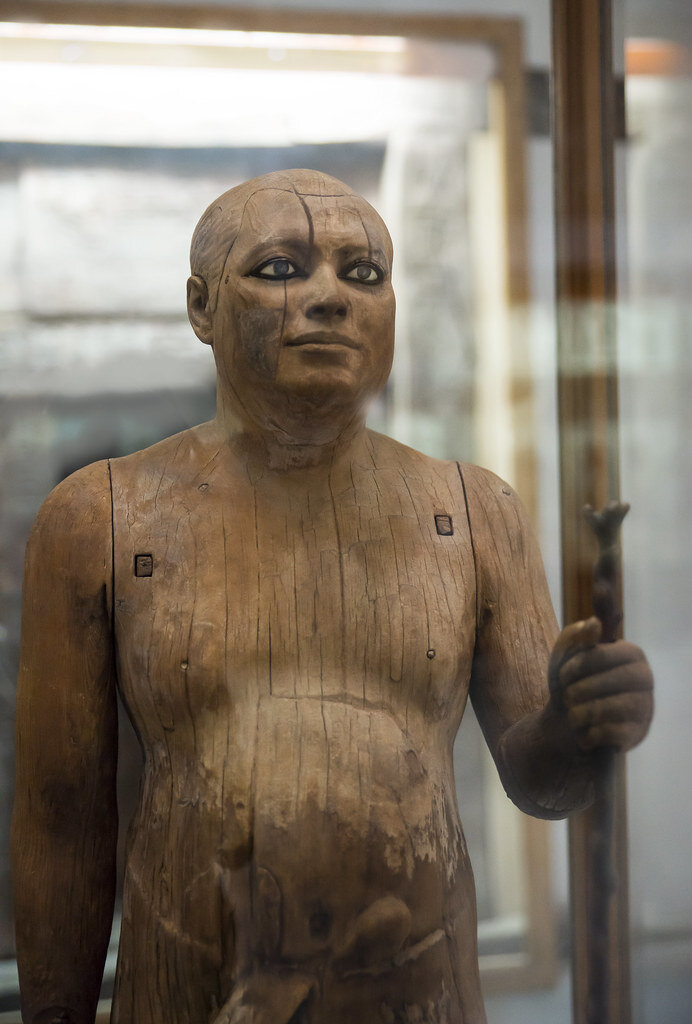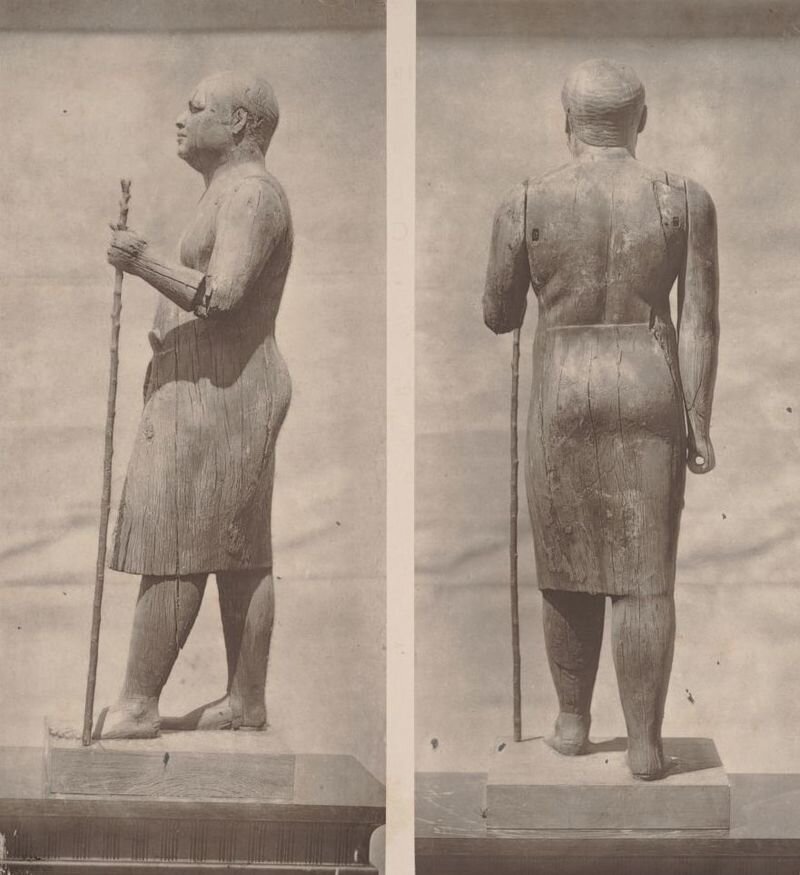The number of wooden statues that survived from ancient Egypt is very small, compared to their stone counterparts. The reasons behind this are that the quality of local wood was poor. High-quality wood, such as cedar, had to be imported from places like Lebanon. Another reason is that wood does not survive the as well as stone. Many wooden statues probably disintegrated through time.
The statue of Ka'aper was found in excellent condition in his tomb (called a mastaba) within the Saqqara necropolis. It dates to the 5th dynasty of the Old Kingdom, circa 2500 BCE.
This beautiful piece was made for the priest-reader, Ka-aper. It was originally plastered and painted. He is represented in a striding pose, with his left foot forward, and holding a staff (now substituted with a copy) in his left hand. His right would have probably held a cylinder. The level of realism with which the subject is represented is impressive, and contrasts with the extreme idealism in which kings and members of the royal family were depicted.
Ka-aper is shown as a corpulent man, probably reflecting his affluent status. His eyes are inlaid with calcite, rock crystal and black stone, outlined with copper, in imitation of eye make-up. These exquisite eyes and the portrait-like facial features add to the life-like quality of this statue, that when the workmen in Mariette’s excavations discovered it they thought it resembled the mayor of their village so much, that the statue was coined “Sheikh el-Balad” (mayor), a name by which this statue is still known today, even by non-Egyptians.
Today, the famous statue of Ka'aper is held at The Egyptian Museum in Cairo, Egypt. Many other gorgeous examples of Egyptian art can be found at the world-famous institution.









